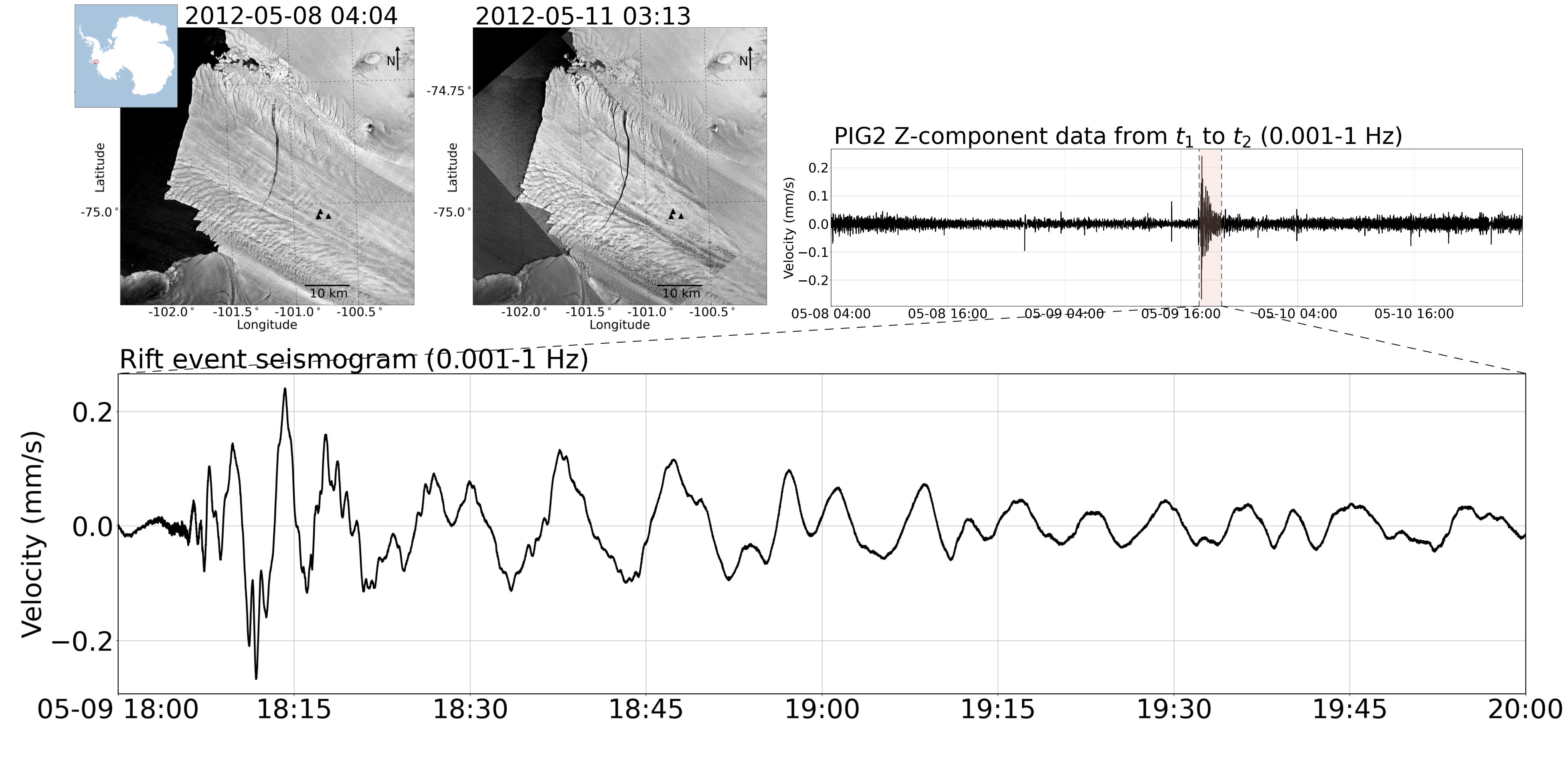
Cryospheric Geophysics:
Predicting and reacting to changes in the cryosphere as Earth’s climate warms requires a robust understanding of Antarctic ice dynamics, yet the fracture processes that influence mass loss and ice shelf stability are poorly understood. Ice fracture not only controls iceberg calving on Earth, but also shapes the surfaces of icy satellites like Saturn’s moon Enceladus, one of the most likely hosts of extraterrestrial life in the the solar system. In my work, I use seismological data and mechanical modeling to study coupled systems of ice fracture and ocean flow on Earth and beyond.
Climate Intervention:
Eath’s climate is warming at an elevated rate due human activity. As international decarbonization continues to progress too slowly to mitigate anthropogenic warming, humanity must develop tools to intervene in climate warming directly. I am interested in a variety of solar radiation management (SRM) strategies and ways to ensure indigenous voices are included in conversations surrounding that research.
Fiber Optic Sensing:
Fiber optic sensing has enabled novel techinques for monitoring near-surface properties with high spatiotemporal resolution. I am interested in using signal processing and fiber optic sensing, particularly distributed acoustic sensing, to understand dyamics in the near-surface. In particular, I am excited about applications in infrastructure and agriculture.
Highlights of my research include:
- Characterizing seismic recordings of kilometer-scale rift extension.
- Modeling interactions between fluid processes and ice shelf fracture.
- Modeling the bending of floating ice shelves in response to fracture.
